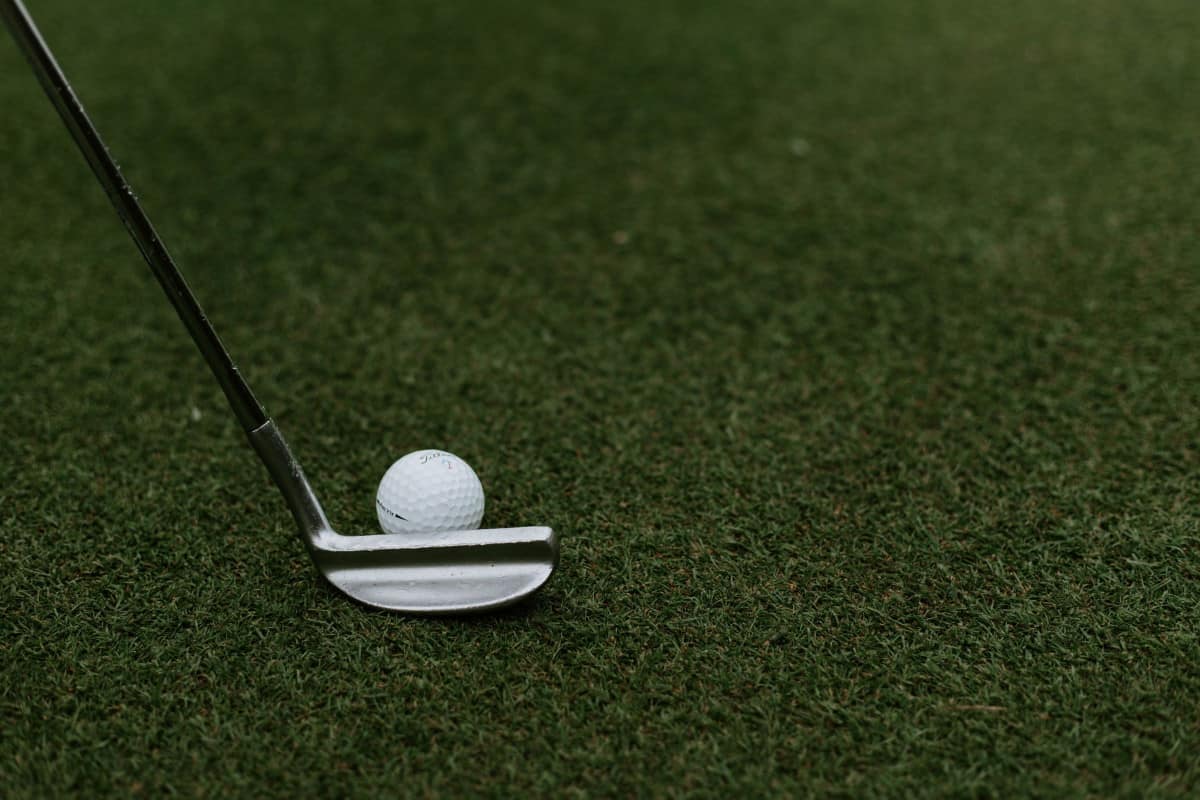As someone who is always looking for a putter to help improve my game, I’ve frequently come across counterbalanced putters. I decided to look into what these putters are and why they are so highly recommended.
What is a counterbalanced putter? A counterbalanced putter is a type of putter that has more mass and weight in the upper part of the shaft and the head of the club. Because of this, the balance point on counterbalanced putters is higher up on the shaft, increasing the stability of the club.
What Does Counterbalancing A Putter Do?
A counterbalanced putter slows down the movement in the shaft of the putter, and conversely speeds up the movement of the club head. With more weight on both ends of the club, the shaft is more stabilized, and the club head swings at a faster rate. This means that the rotation point is higher up on the club because there is more weight distributed on the top and the bottom of the club.
This increased stability mimics the style of putting known as ‘anchoring’. The extra weight up top gives the player the feeling as though they have the putter anchored into their torso. Because there is less movement at the top of the shaft, the player has much more control over their swing.
One of the main reasons that these putters increased in popularity is due to the anchoring ban. Players could no longer use their anchoring technique, so they decided to turn to a putter that would closely resemble the feeling of anchoring, thus the counterbalanced putter made a name for itself.
Pros And Cons Of A Counterbalanced Putter
Depending on what type of golfer you are, you may find that some of the features offered by the counterbalanced putter aren’t a great fit for your putting style. I made a list of what I thought the pros and cons are for this type of putter.
Pros
Increased stability in swing path
- The heavy shaft allows the player to follow their swing path more easily. Basically, the shaft can’t be moved around as easily, giving it a much more stable motion when in use.
High MOI
- Any heavy club head has a high MOI, and the counterbalanced putter is no different. A high MOI means that the putter won’t open or close as much if the putt is hit off-center. This will allow for straighter, on target putts.
Cons
Less control over swing speed
- With a heavier head, some players might find it quite difficult to hit softer putts, especially on fast greens
How Do You Use A Counterbalanced Putter?
There are two ways that are recommended when using a counter balanced putter. Both of these methods use the extra weight to the golfer’s advantage.
Method 1
This first method is generally a great way to use any putter, but it is also recommended when using a counterbalanced putter. Point the top of the putter towards the center of your torso (around your belly button). While you swing, try to keep the top of the club pointed towards the center point. This motion will be easier to do with a counterbalanced putter, and will ensure that you are keeping the club face straight while swinging.
Method 2
The second method is to lean the shaft of the club into your leading forearm. This will require you to stand a bit further behind the ball than normal, but it will help decrease the amount of movement in the shaft and overall increase the stability of your swing (on top of the stability that the counterbalance putter brings). This will ultimately help you hit more on-center putts.
How Do You Hold A Counterbalanced Putter?
There is no special way to hold a counterbalanced putter. For most golfers, they can hold this putter the same way that they hold any other putter. However, with this being said, there is a bit more versatility in the way the putter can be held. Because there is more stability in the shaft of the club, you can actually choke up on the putter a bit more and not have to worry about losing control of the shaft. While this is not a necessary change that needs to be made, it is a more viable option for players that feel more comfortable placing their hands lower down on the club.
Can You Cut Down A Counterbalanced Putter?
Yes, it is totally fine to cut down or shorten a counterbalanced putter. In fact, doing this can actually make the putter much more comfortable depending on how much you shorten it.
Something to keep in mind is that when you cut down a counterbalanced putter, you are removing more weight off of it than if you were cutting down on a regular putter. Because the counterbalanced putter is designed to have more weight in the shaft, shortening the club could throw off the balance that the club has. This could make the club less stable, and could impact the stability of your swing.
What Type Of Golfer Is A Counterbalanced Putter Good For?
Beginners: Between the stability of the shaft, and the high MOI from the increased weight in the head of the club, a counterbalanced putter is great for beginners. The stable shaft will help new golfers control the direction of their swing, while the heavier club head will increase MOI (moment of inertia) which allows the club head to remain centered when the ball is hit off-center. These factors make it a very forgiving putter for beginners.
Players Who Anchor: Players who traditionally anchor the putter will find counterbalanced putters to be a great alternative. Due to the ban on anchoring (which made putting styles like belly putting illegal), many putters have had to adjust and adapt to a new style of putting. The added weight in the shaft allows the putter to imitate the motion you make when you anchor the putter, making it a great option for golfers that prefer anchoring.
Alternatives To Counterbalanced Putters
If you are interested in the counterbalanced putters, but don’t have the funds to purchase a new club, consider buying weights and turn your regular putter into a counterbalanced putter. There are a variety of weighted accessories–like weighted grips and head weights–that you can buy for your club to help create the same benefit that counterbalanced clubs offer.



